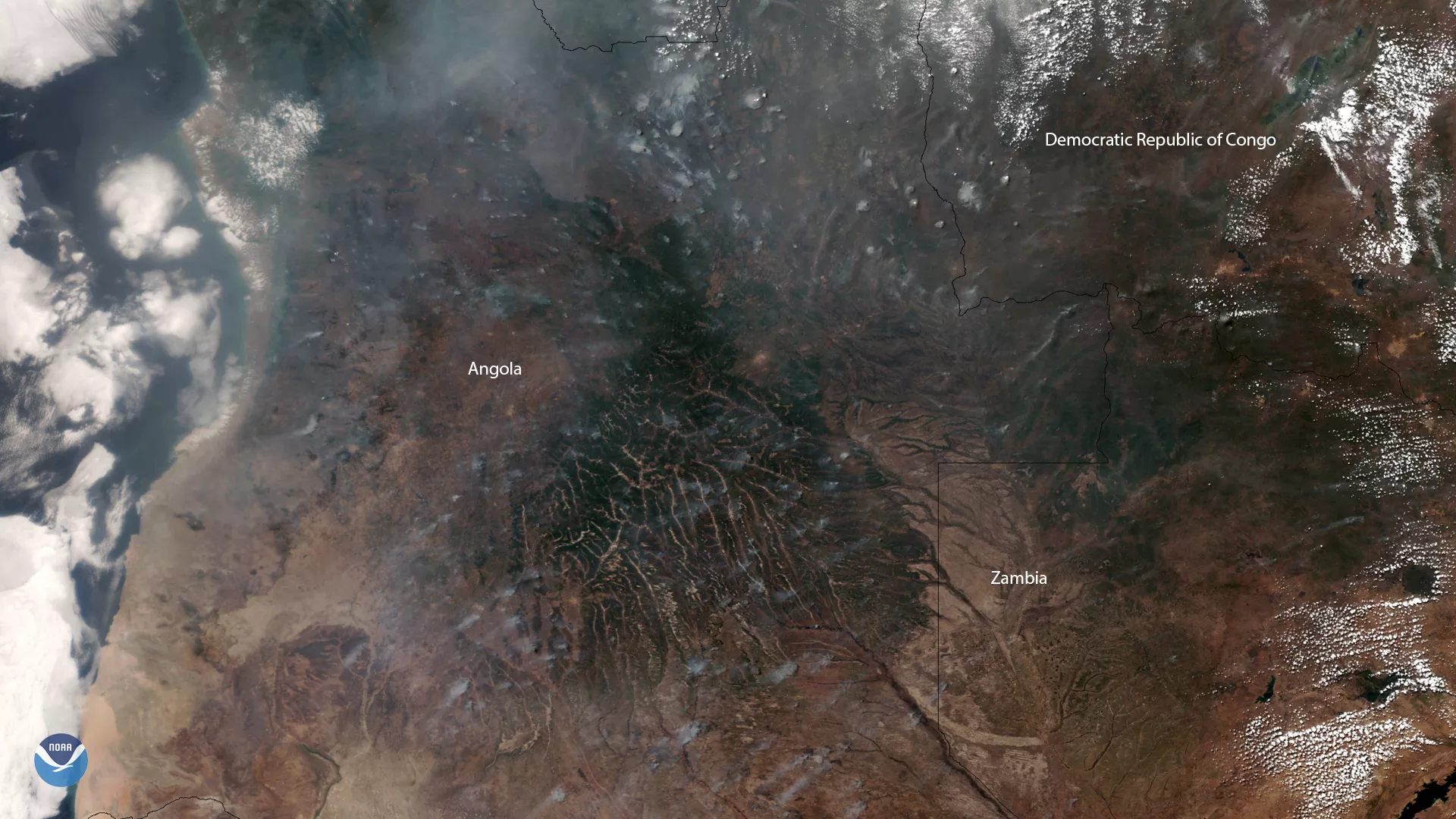
Hazy smoke from agricultural fires in central to southern Africa can be clearly seen in this VIIRS true-color image taken by NOAA-20 on August 2, 2019. A common sight this time of year, farmers regularly set fire to what remains of old crop fields to clear the land for a new planting season. Additionally, these fires also help return nutrients to the soil. Despite this, farmers also often use fire to completely clear areas with dense vegetation or forests in what is known as “slash and burn” agriculture, a practice that can have many serious repercussions for the environment.
Interestingly, a recent study published on July 29, 2019 in Proceedings of the National Academy of Sciences, found that smoke from fires in Africa may be the most important source of phosphorus, a fertilizer, in the Amazon rainforest as well as the Tropical Atlantic and Southern oceans where it stimulates the productivity of marine phytoplankton. In the past, it was assumed that wind-blown Saharan dust was the main source of phosphorus for these ecosystems, but the new findings suggest that aerosols from biomass burning are a more prominent source.
"Aerosols play a major role in Earth's climate,” said the study’s senior author, Cassandra Gaston, PhD, in a press release. “However, there is a lot that we don't understand regarding how they affect radiation, clouds, and biogeochemical cycles, which impedes our ability to accurately predict future increases in global temperature." She also explained that we need to learn more about how dust transport patterns and an increasing human population affect our changing climate and environment, as it is all a delicate balance.
This true-color image was captured by the VIIRS sensor onboard NOAA-20, which provides daily, high-resolution visible and infrared images of Earth's atmosphere from across the globe.
